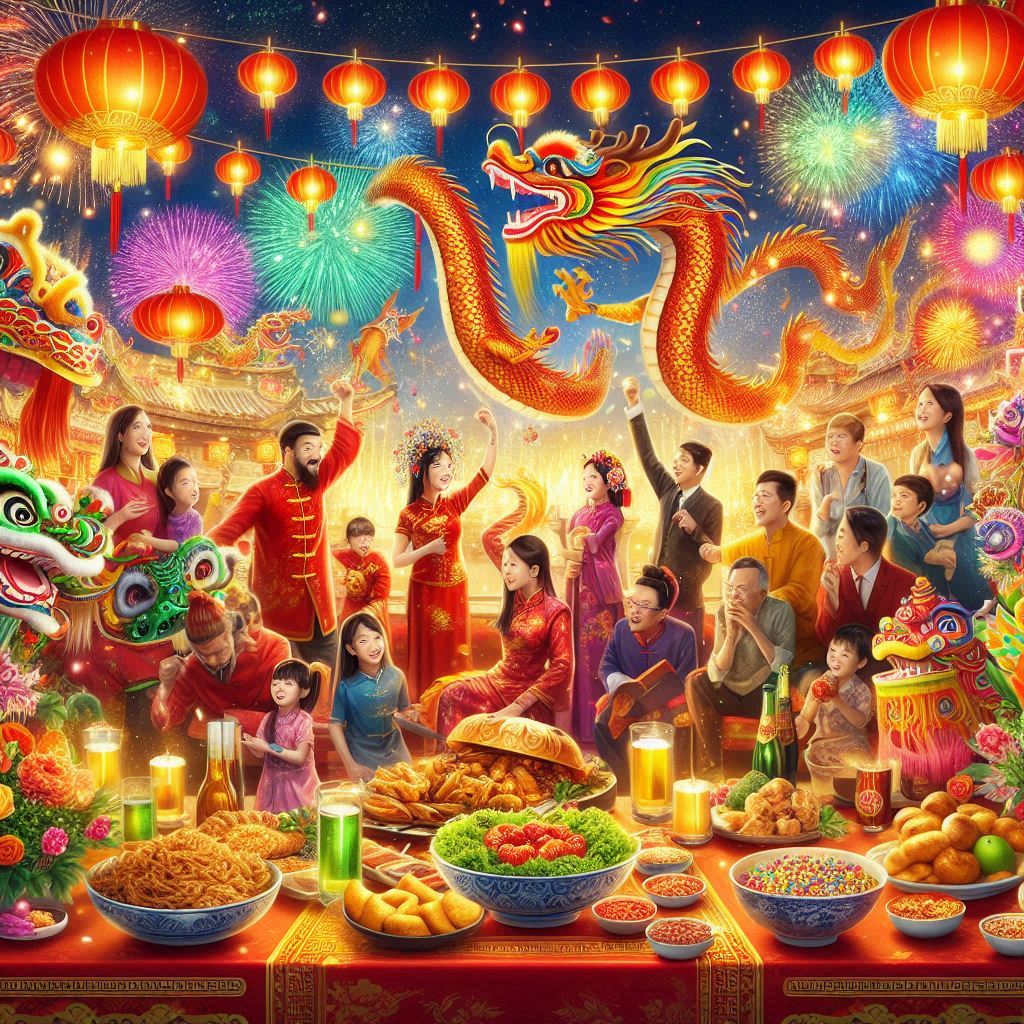
Date: January 29, 2025 (Spring Festival begins, lasting 15 days until the Lantern Festival on February 12).
Chinese New Year, also known as the Spring Festival, is the most important holiday in Chinese culture. In 2025, it marks the transition into the Year of the Snake, the sixth animal in the Chinese zodiac. Known for wisdom, intuition, and elegance, the Snake symbolizes renewal and strategic thinking in 2025.
1. Traditions: Honoring Ancestors and Welcoming Fortune
Chinese New Year is steeped in rituals that blend ancient customs with modern practices:
- House Cleaning: Families clean homes thoroughly before the New Year to sweep away bad luck and make space for good fortune.
- Decorations: Red lanterns, couplets (春联 chūnlián), and paper cuttings adorn doors and windows. The Snake motif will feature prominently in art and decor.
- Red Envelopes (红包 hóngbāo): Elders give money in red envelopes to children and unmarried adults for luck.
- Fireworks and Lion Dances: Loud fireworks scare off evil spirits, while lion and dragon dances bring joy and prosperity.
- Temple Visits: Many visit temples to pray for health and success in the Year of the Snake.
2. Culinary Delights: Feasts with Symbolic Meaning
Food is central to Chinese New Year, with each dish carrying auspicious symbolism:
- Fish (鱼 yú): Served whole to represent abundance (“May there be surplus every year”).
- Dumplings (饺子 jiǎozi): Shaped like ancient gold ingots, symbolizing wealth.
- Nian Gao (年糕): Sticky rice cake for “rising prosperity” in the new year.
- Spring Rolls (春卷 chūnjuǎn): Golden rolls resembling gold bars, eaten for wealth.
- Longevity Noodles (长寿面 chángshòumiàn): Uncut noodles for long life.
- Tangerines and Oranges: Exchanged for their golden color and sweet taste (symbolizing luck and wealth).
In 2025, snake-themed desserts or dishes may gain popularity, such as dragon fruit platters (a nod to the Snake’s mythical cousin) or spiral-shaped pastries.
3. The Great Migration: Traveling Home
Chinese New Year triggers the largest annual human migration globally, dubbed “Chunyun” (春运). In 2025, over 3 billion trips are expected as workers return to their hometowns:
- Challenges: Overcrowded trains, flights, and highways test patience, but the journey is a cherished act of love.
- Modern Solutions: High-speed rail networks and apps like WeChat help travelers book tickets and navigate routes.
- Global Celebrations: Major cities like San Francisco, London, and Sydney host parades, attracting tourists to experience Lunar New Year festivities abroad.
4. Family Reunions: The Heart of the Festival
The phrase “回家过年” (huí jiā guònián – “return home to celebrate the New Year”) captures the holiday’s essence:
- Reunion Dinners: Families gather on New Year’s Eve for a lavish meal. Missing this dinner is considered unlucky.
- Three Generations Under One Roof: Grandparents, parents, and children bond over games, mahjong, and storytelling.
- Virtual Reunions: For those unable to travel, video calls bridge the distance, blending tradition with technology.
5. Joy and Renewal: Embracing the Snake’s Wisdom
The Year of the Snake encourages reflection and growth:
- Gifting Trends: Popular gifts include snake-themed jewelry, tea sets, and tech gadgets.
- Fashion: Red clothing dominates, but snake-patterned fabrics or accessories will trend in 2025.
- Charity and Giving: Many donate to causes aligned with the Snake’s traits, such as education or environmental initiatives.
Conclusion: A Time for Hope and Unity
Chinese New Year 2025 is more than a holiday—it’s a cultural reset button. From ancestral rituals to futuristic celebrations, it bridges generations and continents. As families reunite, feast, and light fireworks, they embody the Snake’s wisdom: slow, steady progress toward a brighter future.
新年快乐! (Xīnnián kuàilè! – Happy New Year!)
